Notes
The Size Epidemic. It’s Not Just Trump.
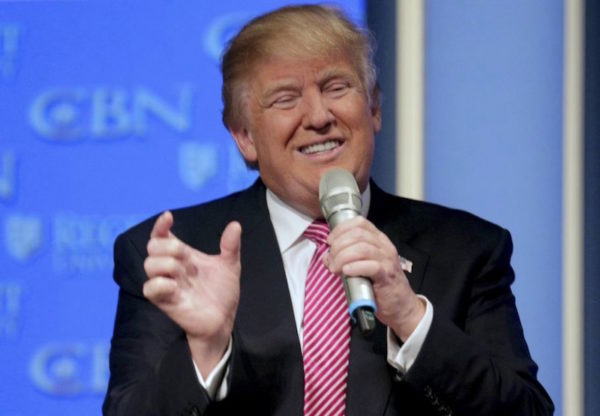
From his jaw-dropping assertion about the size of his hands (and penis) during a March 2016 Republican primary debate to his obsession with photographs showing a distinct shrinkage between Barack Obama’s 2009 inaugural crowd and his own, President Trump has made it clear that size matters immensely to him.
The success of candidate Trump’s political appeals to magnitude—size, worth, importance—also seems unquestionable. “Make America Great Again,” and its attendant policies of wall-building, extreme vetting, and triumphant nationalism appear to have driven Trump’s popularity and the surge of working-class white voters to his cause. Likewise, candidate and President Trump’s preference for visual spectacle makes perfect sense, from his desire to continue holding rallies like the one in Florida today to the repeated photographs of his spiky, dense signature hammered across the bottom of executive order after executive order. Whether these are the visual stylistics of a reality TV star or a budding authoritarian, they make sense and have predictable effects.
What has struck me, however, is that President Trump is not the only one who has turned to magnitude in order to visualize the meaning, purpose, and effects of his presidency. Mainstream news outlets and opposition groups alike are showing a marked preference for photographs that make their claims though appeals to size and scale. Big crowds (or small), overwhelming chaos (or isolation), and disproportionate representation have become the visual hallmarks of the Trump era so far.
Having participated in the 2011 protests in Madison that produced photographs of crowds filling Wisconsin’s State Capitol like the one below, I have become skeptical about the visual power of magnitude.
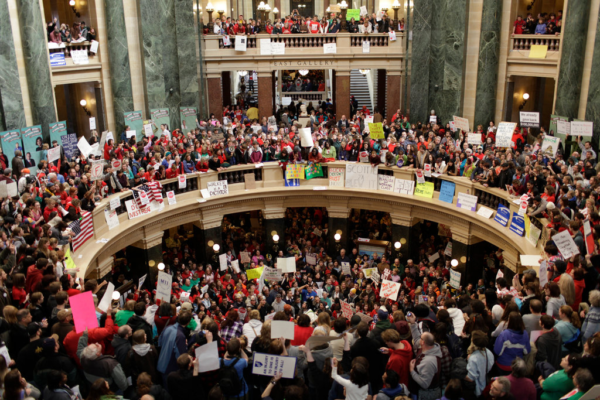
Sheer size is energizing and being part of a massive protest can galvanize people for the long, slow work of politics. But despite living in a representative democracy, there is no direct correlation between the size of a political gathering and eventual outcome of policy decisions. It takes more than filling the streets to effect change.
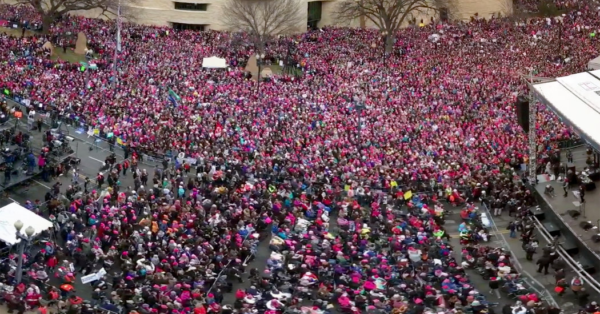
Even so, there is also no doubt that photographs of Women’s Marches around the world on January 21, 2017 were making claims about magnitude that were in direct response to the President’s own size fears. While we certainly saw the close-up pictures of signs and police encounters that are common visual fair for protests, photographs that zoomed out and displayed crowd sizes were by far the most prevalent circulated in news and social media. And news outlets used a number of strategies in their effort to illustrate that size, from time-lapse views of crowds to photo essays showing crowds in cities, large and small, that hosted marches.
Size, in these photographs, was obviously about importance: “This matters!” and “We matter!” shout not only the marchers but the photographs. It is a delicious coincidence that the size of the women’s marches around the world so perfectly mirrored the size of Hillary Clinton’s popular vote margin. Whether or not this is what democracy looks like, it is certainly what 2.87 million votes looks like.
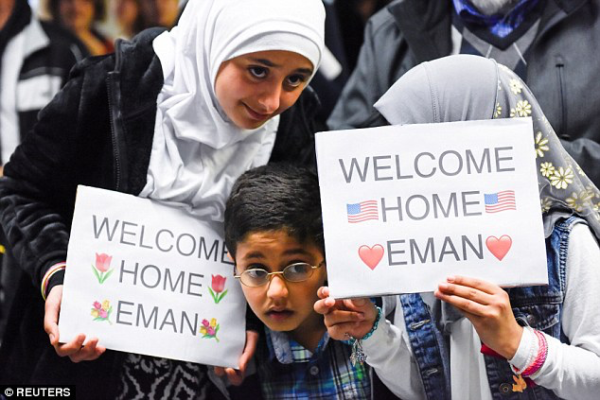
News photographs covering President Trump’s Executive Order halting immigration from seven predominantly Muslim countries were, likewise, focused on magnitude. The protests that swelled at airports across the country spoke to magnitude both in their size and how rapidly they formed. The Executive Orders themselves were big, splashy events, and so were the responses. Even the many photographs showing families reunited drip with appeal to magnitude.
Unable to show the chaos and confusion happening as passport holders from those seven countries were detained at the border, photographers gave us the flip side—the moments of relief and reconnection once detainees were released. In the close shots of families hugging, tears shining in their eyes, we see a claim to what is most significant that brings us down to the most intimate scale.
The hubbub of protest and the chaos of the ban lingers in the background of these photographs, sometimes literally just out of focus, but we are zoomed in to the awesome power of human connection. It is no mistake that many of these reuniting photographs show parents and children. The scale of the ban becomes the scale of a single family torn apart or reunited. The size of the problem caused by the ban becomes bigger as the size of the injury depicted narrows.
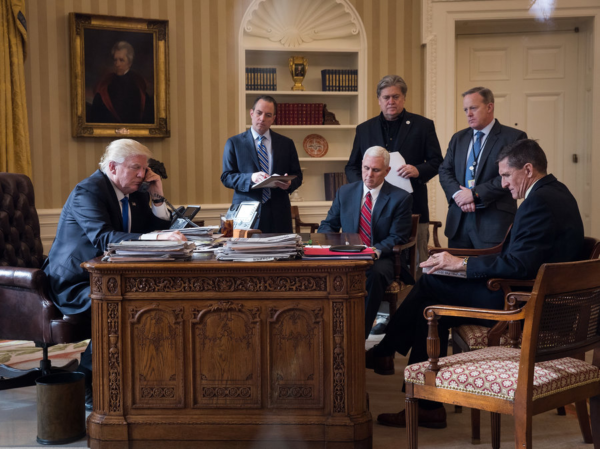
Photographs of protests and airport turmoil invoke magnitude in its most obvious sense of significance through size. Other recent photographs of the Trump White House likewise appeal to magnitude but with a more subtle question of size.
As photojournalists show us the Trump administration itself, they have been leaning heavily on proportion as an aspect of magnitude. Repeatedly, Executive Order photographs show President Trump flanked by overwhelmingly white, male staffers. They show an active, in-command leader, yes, but they also make assertions about what is important to Trump by highlighting the disproportion at the heart of his administration.
While such messages may not be clear to every viewer, they still suggest a consistent visual strategy on the part of photographers. And, for those who do miss the significance of such disproportion, Pete Souza and the Deputy Prime Minister of Sweden (not to mention Planned Parenthood) have done their best to direct our attention appropriately. Similarly, the photographs of President Trump’s Mar-a-Lago “Situation Room,” do their damning work in part through the mismatched proportion of the situation’s seriousness and the President’s capacities.
As President Trump promises major changes and big policies whose negative impacts will fall disproportionally on women, immigrants, people of color, LGBTQ folk, and the working poor, I suspect that magnitude will remain a primary visual strategy for the foreseeable future. Whether the images come from inside or outside the Trump administration, we seem destined to spend four years like President Trump: focusing intensely on size, weight, and proportion.
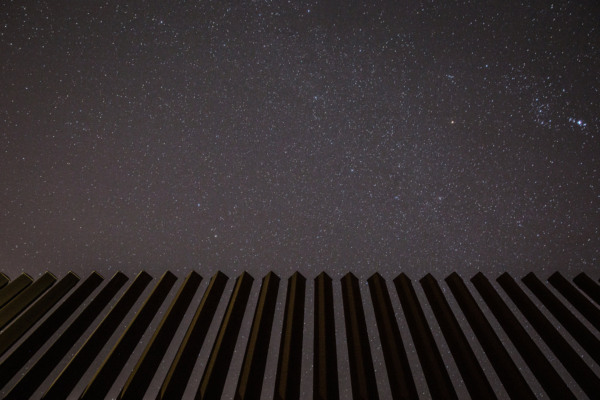
Just wait until he starts building that “great, great wall.”
–Christa Olson | @christajolson
Photo: Joshua Roberts / Reuters Caption: Trump signs executive actions in the Oval Office on Jan. 23, including one resurrecting a policy that prohibits foreign nongovernmental organizations that receive federal funding from performing or promoting abortion services through their work in other countries. Photo 2: Narayan Mahon for The New York Times Caption: Angry public workers, facing cuts, crowded into the Capitol on Wednesday in Madison, Wisconsin. Photo 3: Composite image by Joe Ward based on video from Urdu Voice of America Caption: Detail of Independence Avenue at peak crowd density. Photo 4: Reuters Caption: Anticipation: Relatives of the 12-year-old (Emam Ali of Yemen) waited at San Francisco airport for her arrival in the U.S. after four years apart Photo 5: Drew Angerer/Getty Images Caption: President Donald Trump speaks on the phone with Russian President Vladimir Putin in the Oval Office of the White House, January 28, 2017 in Washington, DC. Also pictured, from left, White House Chief of Staff Reince Priebus, Vice President Mike Pence, White House Chief Strategist Steve Bannon, Press Secretary Sean Spicer and National Security Advisor Michael Flynn. On Saturday, President Trump is making several phone calls with world leaders from Japan, Germany, Russia, France and Australia. Photo 6: Tamir Kalifa for The New York Times Caption: A starry sky on a clear night in January near Harlingen, Tex., where a border wall already exists.”
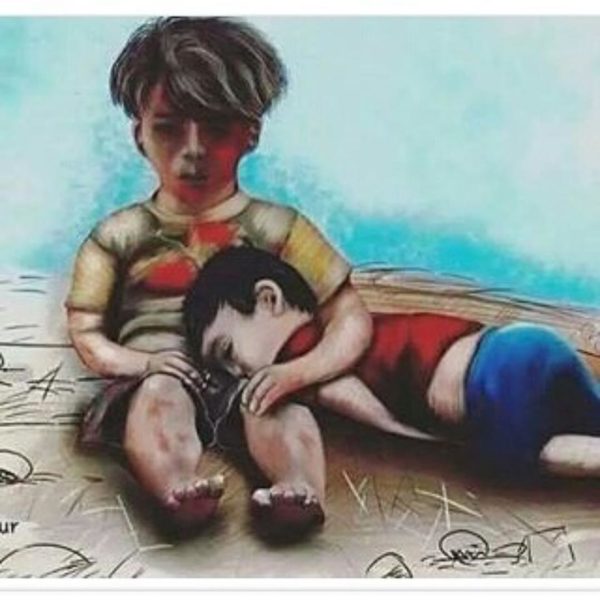
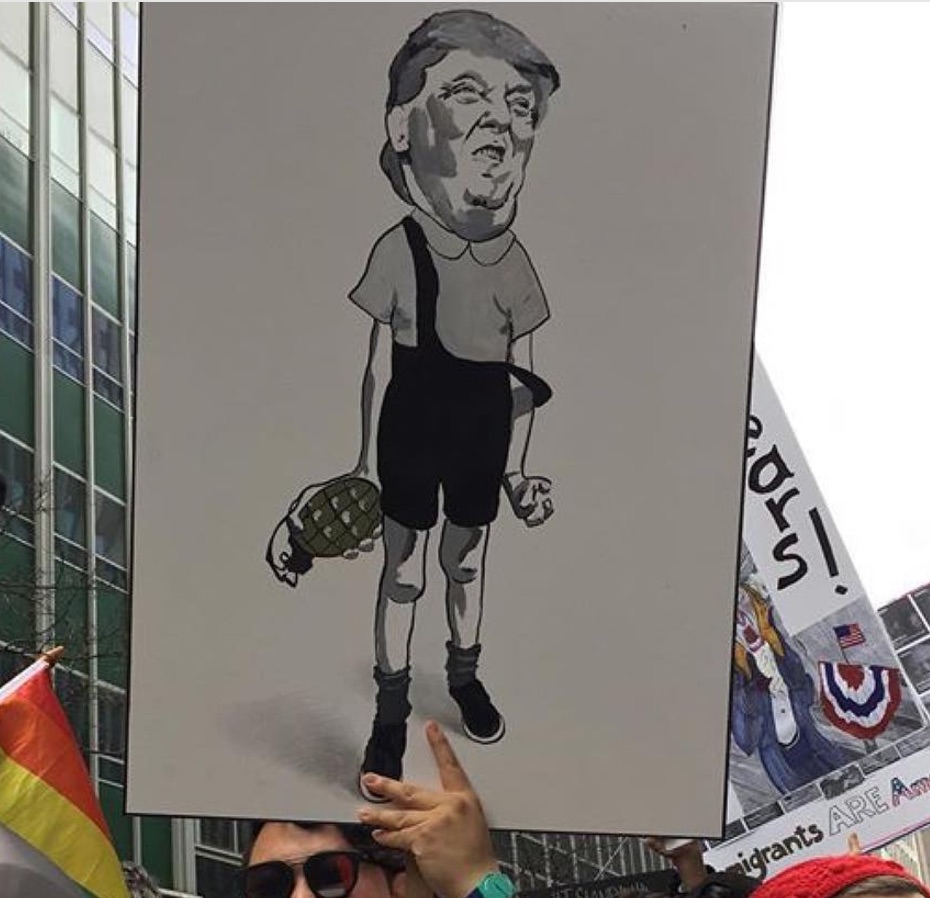
Reactions
Comments Powered by Disqus